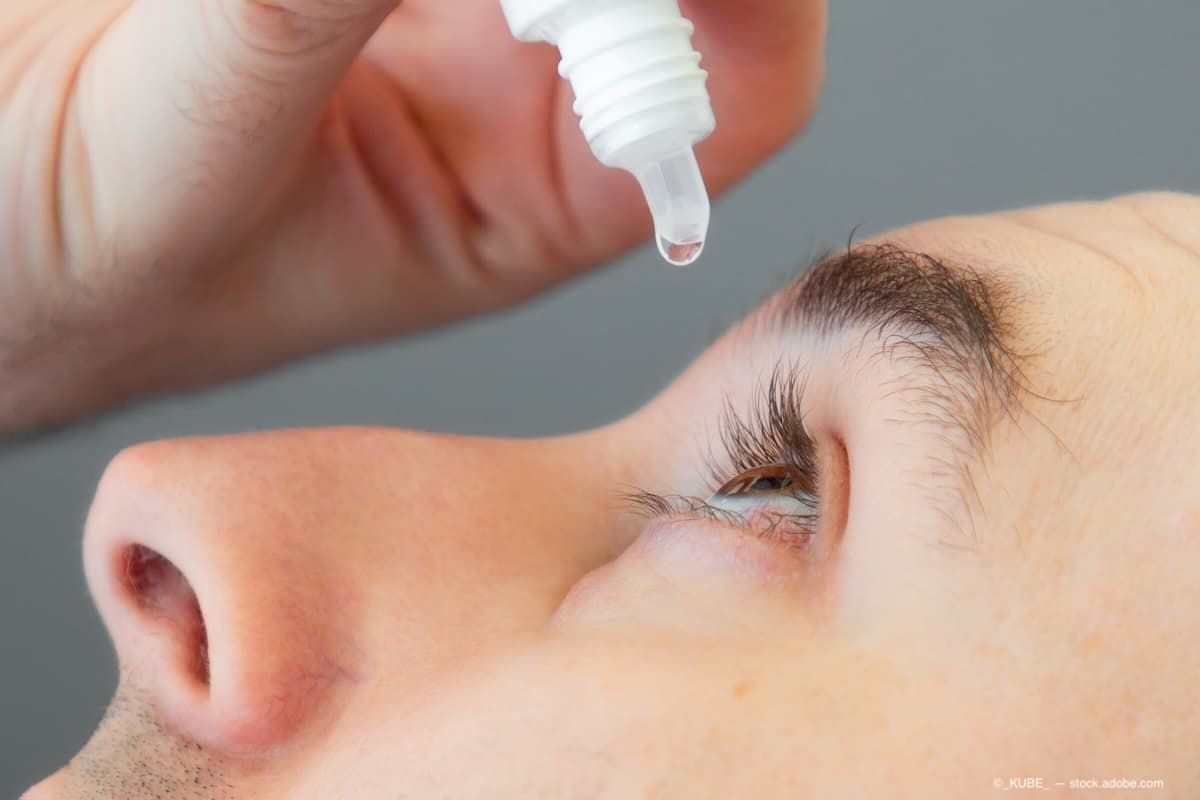News
Article
Ocular pain in Tibetan Plateau residents: Key findings on dry eye disease during COVID-19
Author(s):
Key Takeaways
- Ocular pain is common in DED patients at high altitudes, with 77.5% experiencing varying severity levels.
- COVID-19-induced anxiety significantly increases ocular pain severity and frequency in DED patients.
Special circumstances must be considered for plateau dwellers, such as Tibetans, mountaineers, and garrison officers, who are exposed to low humidity, strong ultraviolet rays, cold and dry weather, and low pressure and hypoxia
(Image Credit: AdobeStock/wusuowei)

A Chinese study1 led by co-authors Peng-Cheng Zhang, MD, PhD, and Wen-Shan Jiang , a PhD candidate, reported that ocular pain is a relatively common complaint in patients with dry eye disease (DED) living on the Tibetan plateau. The ocular pain was associated significantly with COVID-19 epidemic-induced anxiety, professional protection for the eyes, and adequate sleep are associated significantly with the severity and frequency of ocular pain.
The researchers are from the Department of Ophthalmology, General Hospital of Central Theater Command, Fundus Laser Clinical Research Center of Hubei Province, Wuhan, China; and the Shaanxi Eye Hospital, Xi’an People’s Hospital (Xi’an Fourth Hospital), Affiliated People’s Hospital of Northwest University, Xi’an, China.
They explained that during COVID-19, individuals environmental and lifestyle changes, ie, frequent indoor sterilization, increased use of video terminals, long-term mask wearing, and anxiety stress triggered/exacerbated DED.2,3
Special circumstances must be considered for plateau dwellers, such as Tibetans, mountaineers, and garrison officers, who are exposed to low humidity, strong ultraviolet rays, cold and dry weather, and low pressure and hypoxia, the authors pointed out.
“The eyes are the first to suffer and are vulnerable to damage, with DED the most common,4” they stated. At high altitudes bodily functions are affected significantly affected, and the prevalence of plateau DED is 26.1%, which is significantly higher than that (11.9%) at lower altitudes.5
“Ocular pain is one of the important symptoms of DED, but its incidence in patients with DED is unknown. The physical sensation of ocular pain varies with each individual and can be complained of as burning, discomfort, gritty sensation or stinging pain,6 which is difficult to characterize accurately. However, the degree and frequency of ocular pain can significantly affect patients’ quality of life and reduce treatment compliance.7 Therefore, it is crucial to understand the ocular pain among DED patients and its influencing factors, which will facilitate the adoption of individualized therapy strategies,” the researchers commented.
They therefore designed a retrospective study to investigate and analyze the severity and frequency of ocular pain and factors affecting it among DED patients living in high altitudes above 2,500 meters during the COVID-19 pandemic.
The study included 160 DED patients treated from July 2022 to June 2023. The factors collected and studied were age, gender, occupation, illness course, anxiety, plateau duration, plateau protection, ocular surface disease index scale (OSDI), break-up time, Schirmer I test, conjunctivitis, history of ophthalmic medication, autoimmune disease, the workload of daily near vision range, smoking and overnight stay were obtained via comprehensive ophthalmic assessment, and their duration.
Results found at high altitudes
The data analysis showed that 77.5% of DED patients had ocular pain, that ranged in severity from mild, moderate, and severe in 30.0%, 36.3%, and 11.3%, respectively.
The patient-reported frequencies of ocular pain that were described as occasional, half the time, frequent, and persistent were 19.4%, 36.9%, 16.9%, and 4.4%, respectively.
The mean OSDI score was 19.67±5.70 (range, 13-36), and the level of pain was correlated with the OSDI (rs value, 0.316, p<0.001). Logistic regression analysis showed that patients with DED living at a high altitude experienced increased anxiety, which led to increased severity and frequency of ocular pain (odds ratio [OR], severity, 3.662 (mild anxiety), 5.613 (severe anxiety); frequency, 2.387 (mild anxiety), and 4.870 (severe anxiety) (p<0.05 for all comparisons).
The use of professional eye protection and improved daily sleep quantity decreased the severity and frequency of the ocular pain (severity, OR, 0.307, 0.572; frequency, 0.418 and 0.789 (p<0.05 for all comparisons). Smoking and the general protection of the plateau did not affect the severity and frequency of the ocular pain (P>0.05 for all comparisons), the investigators reported.
The authors summarized, “Complaints of ocular pain are relatively common in DED patients on the plateau. Epidemic-induced anxiety, professional protection for the eye, and adequate sleep are significantly associated with the severity and frequency of ocular pain in dry eye patients, while the effect of dry eye symptoms was relatively weak.”
References
Peng-Cheng Zhang, Wen-Shan Jiang, Ya-Zhen Wu, et al. Influencing factors of ocular pain in dry eye disease patients at high altitude. Int J Ophthalmol. 2024,17:2214-2220.
Barabino S. A narrative review of current understanding and classification of dry eye disease with new insights on the impact of dry eye during the COVID-19 pandemic. Ophthalmol Ther. 2021;10:495-507.
Koh S, Rhee MK. COVID-19 and dry eye. Eye Contact Lens. 2021;47:317-322.
Liu BJ, Jiang SS, Li ZY, Wang Y, Zhou DJ, Chen Z. Investigation and analysis of eye discomfort caused by video display terminal use among medical students studying at high-altitude regions. Front Public Health. 2022;10:900539.
Zheng C, Yang YY, Shu YK, et al. Research on dry eye incidence in plateau training or plain encamping soldiers. Med J National Def Forces Southwest Chin. 2016;26:1521-1523.
Kalangara JP, Vanijcharoenkarn K, Chisolm S, Kuruvilla ME. Neuropathic pain and itch: mechanisms in allergic conjunctivitis. Curr Opin Allergy Clin Immunol. 2022;22:298-303.
Dieckmann G, Borsook D, Moulton E. Neuropathic corneal pain and dry eye: a continuum of nociception. Br J Ophthalmol. 2022;106:1039-1043.
Newsletter
Don’t miss out—get Ophthalmology Times updates on the latest clinical advancements and expert interviews, straight to your inbox.




